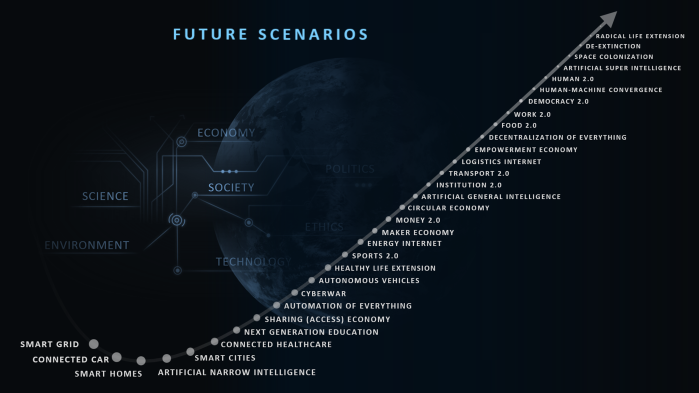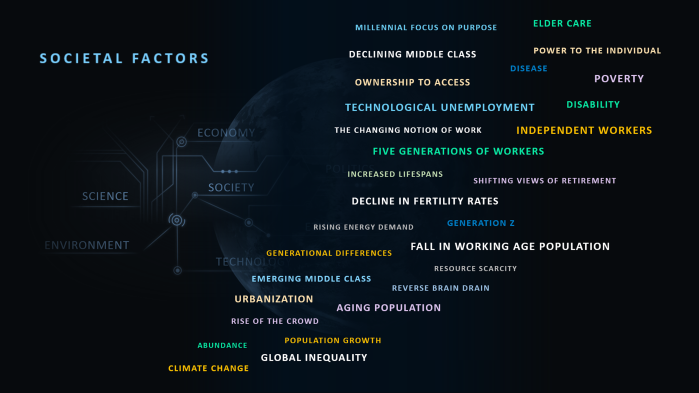As our emerging future shifts continuously, our challenge is to shift with it. The number of building blocks that combine continues to explode, challenging our ability to track its complexity. I’ve used a visual representation of this challenge – and I see older versions floating around – so I am updating it via this post. When I use the visual in presentations, I build towards it to avoid its overwhelming nature (which I believe accurately reflects the overwhelming nature of the challenge). I will replicate the approach here by building towards the full visual.
Convergence across aspects of science, technology, economic forces, politics, society, our environment, and a growing conversation around ethics, is creating a highly uncertain world. At the heart of the pace dynamic is the exponential progression of science and technology – reflected in the first piece of the visual.

This convergence and progression is spawning a second curve, enabling a series of future scenarios and paradigm shifts. These scenarios (and many more) take humanity towards a third major Tipping Point.

Add to the mix a series of societal factors, and you have a recipe for complexity, volatility, and uncertainty.

The final visual brings it all together. This incomplete snapshot reflects the leadership challenges across all aspects of society. It underscores the critical need to See this Future at some level, rehearse it incessantly, and be prepared to adapt to the inevitable shifts.


Your focus on adaptation seems to lack a full understanding of the concept of acceleration. Your articles are built upon the assumption that if we do X, Y and Z we can keep up with the pace of change and successfully manage it. This is surely true up to a point, because we are already doing just that.
But the factor of acceleration means that our ability to adapt will inevitably fall short at some point. The fact that we can successfully adapt to a pace of change unfolding at one rate does not automatically equal the same ability at ANY rate.
You’re driving down the Autobahn in your car. You’re comfortable at 50mph. You can handle 80mph no problem. You try 120mph and it seems doable, so you go for 150mph and make it work. This pattern of success does not equal an ability to drive your car at 1900mph. As you drive faster and faster you will inevitably find that point where you can no longer maintain control.
We might call this perspective the Peter Principle of futurism, we keep getting promoted until we finally reach the job we can’t handle.
LikeLike
[…] the pace in our environment, which in turn drives uncertainty and complexity. The visual below (Explained Here) describes this dynamic while tracking several building blocks. I update the visual periodically […]
LikeLike
[…] a glimpse into possible futures through a series of recently published books that focus on our Our Emerging Future and accelerate our learning and dialog. As with his previous books, Rohit Talwar enlists several […]
LikeLike
[…] I periodically add more future scenarios to this visual that attempts to describe all the dots that are connecting to create our future. This future is complex, emerging from the combination of new and existing building blocks – a dynamic that enables the rapid pace that society is experiencing. The visual is described in detail Here. […]
LikeLike
[…] the furthest point of the future scenario curve sits radical life extension. I use this emerging future visual to depict the exploding number of building blocks that combine to shape the future, challenging our […]
LikeLike